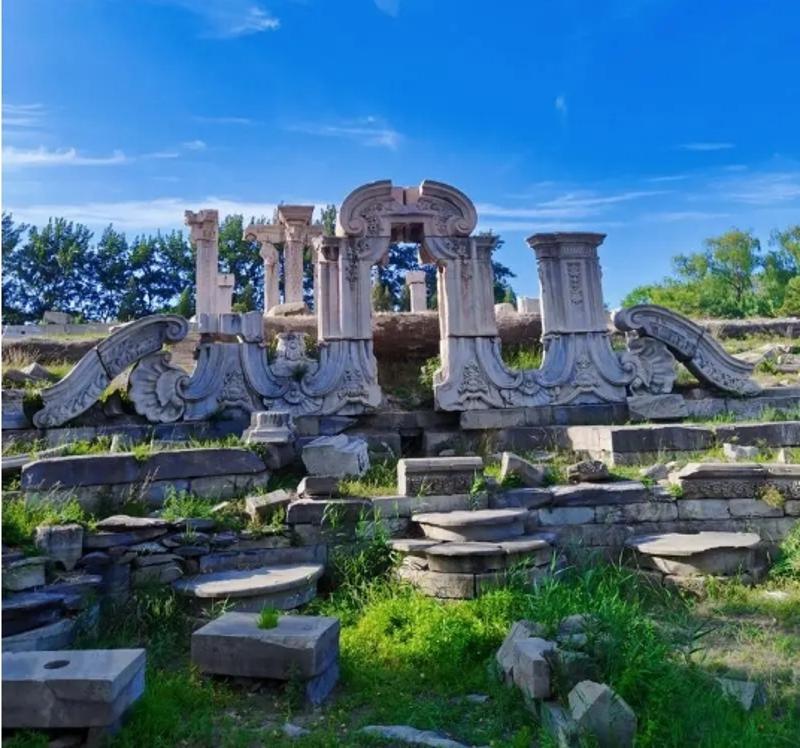What happened to the old Summer Palace in Beijing?
The Old Summer Palace, a large imperial garden located in Haidian District, Beijing, is renowned for its rich garden collections, architectural styles, and numerous artistic and historical treasures. However, during the Second Opium War, the Anglo-French Allied Forces sacked and burned the Old Summer Palace, leaving China with a heavy historical trauma. Today, the ruins of the Old Summer Palace remain open to the public, becoming an important tourist attraction.

History of the Old Summer Palace:
The construction of the Old Summer Palace began in 1707 and was expanded and renovated by several generations of emperors, including Kangxi, Yongzheng, and Qianlong. It became the main palace and place for handling state affairs for Emperor Qianlong of the Qing Dynasty and his successors. The garden is known as the "Garden of Gardens," concentrating the essence of ancient Chinese garden art.
Location of the Old Summer Palace:
The Old Summer Palace is located 8 kilometers northwest of the former imperial city wall in Beijing, covering an area of over 3.5 square kilometers, almost five times the size of the Forbidden City. The garden boasts hundreds of buildings, including palaces, pavilions, temples, galleries, gardens, lakes, and bridges, recreating several famous landscapes in southern China.
Destruction of the Old Summer Palace:
In 1860, the Anglo-French Allied Forces occupied the Old Summer Palace and looted and destroyed the imperial collections over the next few days. In retaliation, James Bruce, the 8th Earl of Elgin, the British Commissioner in China, ordered the complete destruction of the palace. The fire lasted for three days and nights, with many exquisite artworks plundered. According to UNESCO, these artworks are currently housed in 47 museums around the world.
Consequences of the Destruction:
After the destruction of the Old Summer Palace, the Qing court moved to the Forbidden City. Emperor Tongzhi attempted to rebuild the Old Summer Palace but failed due to a lack of funds. It was not until the 1980s that the site was recovered by the government and designated as a historical monument. Today, the ruins of the European-style palaces are the most prominent architectural relics, becoming an important place for tourists to recall history.
Recent Developments and Plans:
In recent years, the Chinese government has strengthened the protection and restoration work of the Old Summer Palace. The lakes and waterways in the eastern half of the garden have been re-excavated and refilled with water, while the shrubbery on the hills around the lakes has been cleared to restore the long-lost scenery. Several temples within the Old Summer Palace have also been renovated and rebuilt. At the same time, the Chinese government is working to recover stolen cultural relics and promote the inclusion of the Old Summer Palace on the UNESCO World Heritage List.
Transportation for Tourism:
The ruins of the Old Summer Palace remain open to the public and are an important tourist attraction in Haidian District. Visitors can reach the Old Summer Palace Park from the Yuanmingyuan Station on Line 4 of the Beijing Subway. Additionally, visitors can also choose public transportation, taxis, and other means of transportation to get there.
Summary:
As the pinnacle of Chinese imperial gardens and palace design, the Old Summer Palace embodies rich historical, cultural, and artistic values. Despite the devastation caused by war, the Old Summer Palace still attracts countless tourists with its unique charm and historical significance. Through enhanced protection, restoration efforts, and the recovery of stolen cultural relics, the Chinese government is committed to reviving this historical gem with new vitality and dynamism.
Q1: What is the historical background of the Old Summer Palace?
A1: The construction of the Old Summer Palace began in 1707 and was expanded and renovated by several generations of emperors, including Kangxi, Yongzheng, and Qianlong. It became the main palace and place for handling state affairs for Emperor Qianlong of the Qing Dynasty and his successors. The garden is known as the "Garden of Gardens," concentrating the essence of ancient Chinese garden art.
Q2: Where is the Old Summer Palace located?
A2: The Old Summer Palace is located 8 kilometers northwest of the former imperial city wall in Beijing, covering an area of over 3.5 square kilometers.
Q3: When was the Old Summer Palace destroyed?
A3: In 1860, the Anglo-French Allied Forces occupied the Old Summer Palace and looted and destroyed the imperial collections over the next few days. As retaliation, James Bruce, the 8th Earl of Elgin, the British Commissioner in China, ordered the complete destruction of the palace.